by Robert E. Hunter
What did the guy say? Truth is the first casualty in war. And that other guy? “If you don’t learn from history…” Both bromides apply to what is happening with regard to Ukraine, as US government officials (other than Secretary of Defense Chuck Hagel, the one calm voice) and the commentariat are trotting out Cold War analogies. It’s always difficult in crises, especially with a certified Bad Guy on the other side, to step back, calm down, try to understand “how we got from there to here,” and then figure out an approach that has a chance of being successful, in terms of our interests and the values we hope are shared by others.
To start with, Crimea is Russian (Tatar, actually, but it is too late to do much about that). That is Fact One. (Fact two: Vladimir Putin is, indeed, a thug). It was given as a birthday present to Ukraine in 1954 by Nikita Khrushchev, himself a native-born Ukrainian. This administrative change didn’t mean much until 1991 when the Soviet Union broke up and Ukraine emerged as a sovereign state with this bit of Russia embedded in it. Crimea might have reverted to Russia then, as the Czechs and Slovaks agreed to their “velvet divorce.” But few people thought then in terms of tidying up borders and ethnicities where such an action might just make matters worse and so Ukraine became independent with what territory it previously had under the Soviet Union — on balance, in my view, the correct approach.
One theory in the early 1990s was that redrawing borders in Central and Eastern Europe to align ethnicities to sovereignties was a fool’s errand or worse. Much of the mess of ethnicities and borders was a product of the 1919 Paris peace negotiations, and there was no point in the 1990s of trying to sort out the puzzles that Woodrow Wilson, David Lloyd George, and Georges Clemenceau had been unable to solve. The theory further held that immersing these mixed-up countries collectively in NATO as well as in the EU would eventually lead peoples to value the resulting democracy and prosperity over ago-old ethnic hostilities. Thus Hungary was told it had to give up claims to Transylvania, which was transferred to Romania in 1921 in the Trianon Treaty, or it could forget about joining NATO. It was a no-brainer; even so, Hungary is one Central European country where memories of the “old days” of Empire still linger in many minds.
Hungary is a good analogue to Ukraine, but without the same result, in part because neither Ukraine nor Russia has been offered membership in either NATO or the EU. The former is too mixed up in terms of its population’s composition to be a “clean” fit, and including it fully in the formal Western institutions would be a clear provocation to Russia. For its part, Russia would be too big for NATO and the EU to swallow; it would totally distort those institutions and it isn’t interested anyway.
Historical missteps
One big Western mistake was declaring at the 2008 Bucharest NATO summit that Ukraine and Georgia “will become members of NATO.” These words were designed to placate those who wanted to set those two countries on a path of NATO membership without necessarily meaning it — like the often-made, cynical European promises that Turkey will join the EU. The statement was also designed to give something to US President George W. Bush, who was pushing the Ukrainian and Georgian causes, without meaning anything real. But it did. Saying that a country “will become a member of NATO” means that the allied countries making the pledge are — from that moment onward — prepared to extend to the country in question that critical Article 5 of the NATO Treaty, which provides that each ally will come to the rescue of any other ally attacked from abroad. Two leaders accurately read this declaration: President Mikheil Saakashvili of Georgia and President Vladimir Putin of Russia. Believing, incorrectly, that NATO “had his back,” Saakashvili poked at the bear, and the bear struck back. The net loser was Russia because Western trust in Russia’s willingness to be a real Western country plummeted. At that time, I wrote that Putin had chosen to attack Georgia to set an example, because no Western country really cared about it — indeed, no NATO allies that had expressed willingness to include Georgia as a member of the alliance lifted a finger to help it, thus showing that the Bucharest declaration was vacuous. But, I wrote, Russia had better be careful about Ukraine because, since it lies on a direct line between Russia and Western Europe, Russian pressure there would have much graver implications.
When Central European countries were considered for (serious) NATO membership, Ukraine and Russia were places apart. Thus instead of offering membership, NATO negotiated a “Distinctive Partnership” with Ukraine, with a Charter (which I negotiated for NATO) that was far less than membership; and it negotiated a NATO-Russia Founding Act in 1997 and in 2003 that further extended NATO-Russia cooperation, including a NATO-Russia Council at NATO headquarters, with Russia present as an equal with the Western allies. Ukraine would not exactly be in limbo, but it would also not, at least for now, be a serious candidate for any form of membership in Western institutions that could legitimately be seen by Russia as drawing a line between it and the West. A delicate balance was struck, with Ukraine being offered a Western “vocation” and without Russian oversight, but also without damaging possibilities for Western cooperation with Russia.
A further premise of this approach was that the West and Russia would explore ways to work together and support Russia’s efforts to increase prosperity so that, in the fullness of time, Ukraine’s full sovereignty and independence would be acceptable to most, if not all Russians. Maybe this goal was out of reach, we shall never know. Maybe Putin (and his ilk) have all along been interested in recreating the Russian (Soviet) empire to the extent possible, by intimidating some neighbors and chopping into the sovereignty of some others.
But the moment for trying was lost. I argued at the time that Russia should immediately be brought into the General Agreement on Tariffs and Trade (GATT), now the World Trade Organization (WTO), in order to hasten its economic engagement in the West and hence its prosperity but that was not done: Russia “had to meet the criteria for membership.” Criteria be damned, this was a political step. Similarly, the US Congress only repealed in 2012 the 1973 Jackson-Vanik Amendment limiting trade with the Soviet Union, which was originally designed to get it to permit Jewish emigration (an issue that died with the dissolution of the Soviet Union) and also designed to try killing US-Soviet détente.
Then there was the US decision to deploy elements of ballistic missile defenses in Central Europe, against today’s North Korean missiles and, in theory, those that Iran might have at some point in the future. Russia balked, arguing that this system would risk blunting its nuclear deterrent. The US has argued long and hard against this and it’s correct. The Russians obviously understand the point, as does any first-year student of nuclear strategy (I have worked on it for a half century). But that is not the issue. The missile defenses in Central Europe are an affront to Russia, demonstrating once again that it lost the Cold War; and, as the Russians argue, if a counter to future Iranian missiles were needed, that time is far in the future. At the same time, various Central Europeans see the missile defenses in the same light as do the Russians: a form of continued containment of Russia. Further, the missile defenses, like some other NATO military activities in new allied states, violate the spirit, if not the letter of precise commitments made to Russia at the time of the NATO-Russia Founding Act (I was present when the key US unilateral declaration on this point was drafted by a US official on a napkin in the NATO restaurant in Brussels).
What comes next
So, without repeating all the news of the last few weeks, “What is to be done?” as Nikolay Chernyshevsky said and Lenin repeated. This depends on the immediate possibilities of Putin’s three courses of action: to shift Crimea back to Russia and challenge anyone to do anything about it; to sit tight with his troops there (as he has done in disputed regions of Georgia); or to accept that he has made his point and agree to some face-saving formula to withdraw his troops, perhaps with UN monitors (so far rejected by Moscow) and perhaps some intensification of Crimea’s semi-autonomy within Ukraine that would benefit the Russians who live there.
The worst thing for the United States to is to draw red lines, especially ones that we cannot and will not honor. President Barack Obama came perilously close to doing so by saying that “there will be costs.” Sanctions have been trotted out (the standard “feel good” response when military action has to be ruled out), and some US hotheads are already talking about beefing up NATO defenses and holding military exercises in Central Europe. Secretary of State John Kerry has said that “all options are on the table,” a phrase from the playbook on Iran. All” options, Mr. Secretary? Yes, there will be ”costs,” in that Western trust in Russia, vital for it to have productive economic relations, has gone down even further, and Russia cannot pursue the autarkic policies of the Soviet Union. But what is most required now is coolness under pressure and serious thinking about the future.
It is long past time to complete the construction of the “Europe whole and free” and at peace that George H.W. Bush called for that — with Ukraine and Russia — has been so long delayed. That is in the realm of diplomacy, and it takes the following shape: to convene a series of efforts to sort out security and economic arrangements that attempt to achieve several principles and objectives. These include:
1) Ukraine is sovereign and will not have its future determined against its will by outsiders but the overwhelming Russian ethnicity of the Crimean people will get more recognition than heretofore;
2) Russia will have a proper and honored place in the security, political, and economic arrangements that are agreed as part of the process proposed here, provided it is prepared to “play by the rules” (“a voice but not a veto,” in NATO parlance);
3) NATO and the EU will be directly involved, beginning with the institutions for working with Ukraine and Russia that already exist;
4) the US and Russia will also deal directly with one another, in line with the broader diplomacy, as the two countries that, in the end, have to reach agreement on the future of European security;
5) ditto in regard to the European Union with Ukraine and Russia (and the two together);
6) in the process, various Russian proposals for European security need finally to be looked at seriously, but with the proviso that the Russian idea of replacing NATO is not on the table; yet some role for the Russian-led Collective Security Treaty Organization (CSTO) can be considered.
Can such a process be properly developed and eventually be made to work? As with any such effort, doubts will be heavy. Putin’s appetite may be too great and he might allow Russia to be isolated; and US leadership and imagination may be lacking. But there is no way to judge since this necessary work has been postponed already for two decades. It has to begin with forbearance, now, by Putin; a calming influence from Washington; with discussions involving the US, Western Europeans (including NATO and the EU), Ukraine, and Russia; and with the recognition by all parties that the alternative is continuing crisis, instability, and human regression for all, with no winners and all losers.
“Leadership,” Mr. Obama?

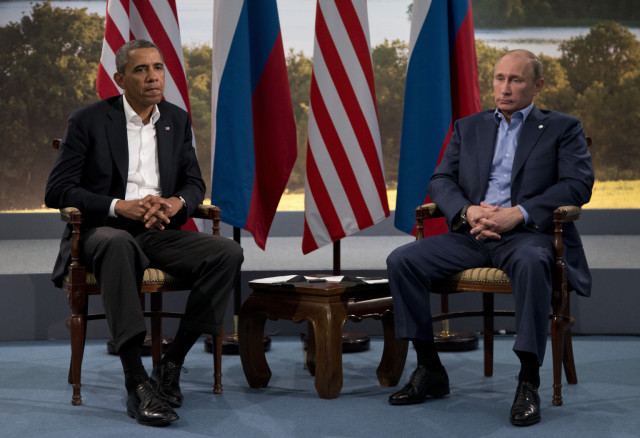
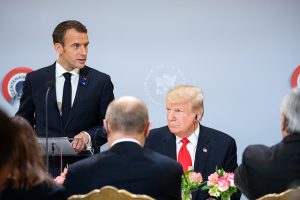
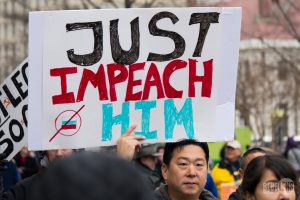
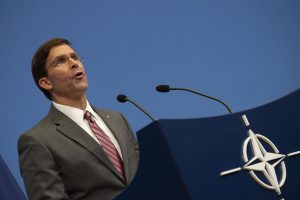
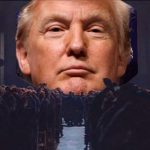
Amidst a gaggle of harsh and often irresponsible voices about the latest developments in Ukraine, this is a welcome voice of sanity and a useful history lesson. Not only are all the militant comments and pronouncements unproductive, they are even dangerous. The fact of the matter is that for most of the recent history Crimea has been a part of Russia, and it is the base for Russia’s Black Sea fleet. Most of its population is of Russian origin and even after the independence of Ukraine, Crimea was recognized as the Autonomous Republic of Crimea. According to the treaty with Ukraine, Russia is allowed to keep 25,000 forces stationed in Crimea. If Putin’s remarks in his interview this morning are to be believed, Russia has not even sent any fresh forces to Crimea, but has simply tried to protect the people in Crimea with the forces that had been already stationed there.
No matter what one may think of the desire of Western Ukrainians to join the West, the fact is that the present government came into power as the result of an armed putsch by demonstrators in the Maidan that included some violent and unsavoury characters. The rebel leaders violated the agreement that they had reached only a day before with three European foreign ministers and the democratically elected president was forced to flee.
Therefore, instead of inflaming the situation and making threats that cannot be carried out or if they are carried out would have major unpredictable consequences, it is essential for cooler heads to prevail and to find an arrangement similar to what you have proposed. There are a number of European states and indeed Canada that run on the basis of a federation with different official languages. There is no reason why one cannot envisage a similar federation of semi-autonomous regions in Ukraine with Ukrainian and Russian being official languages where they are spoken by a majority, with some special arrangements for Crimea that recognizes Russia’s special relationship with it. In view of its history and the present realities, Ukraine should be a neutral country, rather like Finland or Switzerland with equally friendly relations with both Russia and the EU.
Another step for the future would be to think about the whole logic behind the existence of NATO. It was a military alliance created to fight against the Warsaw Pact forces, but with the collapse of the communist block and the end of the Cold War it is difficult to find a logical reason for NATO’s continuation.
The fact is that it was the US, Russia and the UK that conned Ukraine into giving up all (about 5,000) of its nuclear weapons and all of its ICBM’s. The US also conned other Eastern European countries (now NATO members) into disarming as a price of NATO membership. Hungary for example, reduced its armed forces from 157,000 to 29,400. It was forced to give up about 3,000 shoulder fired anti aircraft missiles and hundreds of intermediate range rockets. Subsequently the Hungarians were also asked to give up most of their Russian made armor (tanks) and helicopters to Iraq and Afghanistan. None of that equipment was ever replaced. While the US was giving billions of dollars of aid, modern tanks and F-16’s to the Muslim Brotherhood in Egypt, the new Eastern European NATO allies were offered old US equipment at top prices. Now these countries realize that the wolf is at their door and if the Russians decide to invade they will not last more than 24-72 hours. What will Obama do for them? Send them some MRE’s and give a speech deploring the Russian invasion. The NATO Treaty is not worth the paper it is written on.